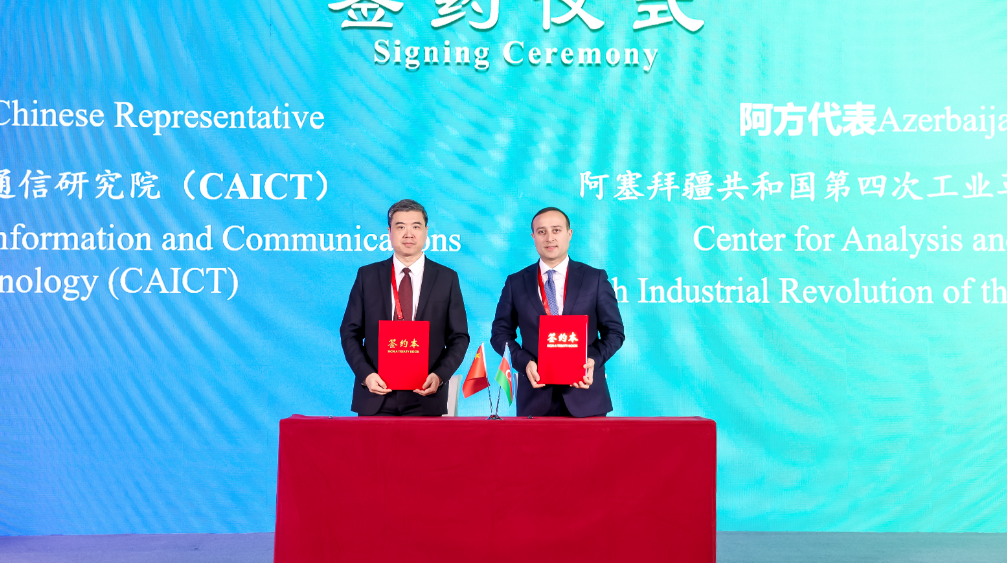|
|
TODAY.AZ / Society
Media tour organized to Gala State Historical and Ethnographic Reserve
26 November 2024 [17:21] - TODAY.AZ

Representatives of international media have visited Gala State Historical and Ethnographic Reserve during the 29th session of the Conference of the Parties to the UN Framework Convention on Climate Change (COP29) held in Baku, Azernews reports.
The media tours began with a visit to the From Waste to Art Museum created on the territory of the Gala Reserve. The guests were very interested in the creation of art samples from waste using the Zero Waste approach.
Then the media representatives visited the Gala open-air archaeological and ethnographic museum complex, got acquainted with the rural life of Absheron in the 18th century, ancient crafts such as carpet weaving, pottery, blacksmithing, and took part in master classes.
The participants of the media tour were provided with detailed information about the lifestyle of the residents of Absheron villages, as well as about the architectural and archaeological monuments on the territory of the Gala Reserve.
In addition, representatives of foreign media were told about the environmentally friendly Gurama art, revived in the Gala Reserve. The guests visited the exhibition "Guram Art. Unity of Time", organized as part of the COP29 event.
Note that the media tours to the Gala Reserve were organized by the Media Development Agency together with the COP29 Operating Company with the support of the Icherisheher State Historical and Architectural Reserve Administration.
The 2024 UN Climate Change Conference (UNFCCC COP 29) was held in Baku, Azerbaijan on November 11-22.
The event gathered world leaders and negotiators from the member states (or Parties) of the UN Framework Convention on Climate Change (UNFCCC) to further global progress, with business leaders, young people, climate scientists, Indigenous Peoples, and civil society sharing insights and best practices to strengthen global, collective and inclusive climate action.
Among the key priorities of COP 29 are securing a new goal on climate finance, ensuring every country has the means to take much stronger climate action, slashing greenhouse gas emissions and building resilient communities.
Established in 2008, Gala State Historical Ethnographic Reserve is home to a rich collection of artifacts unearthed during archaeological excavations, making it a must-visit destination for history enthusiasts.
At the reserve, visitors can explore the Museum of Archaeology and Ethnography, the Museum of Antiques, and the Castle Museum, which together house over 2,000 archaeological and architectural relics.
Among them are ancient rock paintings, pottery, jewelry, weapons, and coins, among other fascinating artifacts. Of particular interest are the 18th-century tandir, two underground passages from the 10th to 15th centuries, and various traditional dwellings such as portable animal skin tents and stone and straw houses with domes.
The Reserve also boasts ancient mounds, grave stones, places of worship, and other captivating monuments that capture the curiosity of visitors. One standout feature of Gala settlement is its stunning rock carvings. Dating back centuries, they depict the hunting scenes, anthropomorphic figures, and zoomorphic images. Scenes of sacrifice, as well as depictions of deer, goats, and oxen, can also be admired here.
These ancient findings are housed in the open-air museum, alongside a mosque located next to the Gesr tower. Gala is renowned as one of the oldest shopping centers in history. As early as the 17th century, the European traveler Engelbert Kaempfer mentioned the mining of high-quality salt in the village.
In the 18th century, Johann Lerch detailed his journey to Gala in his notes, while the Russian traveler Berezin mentioned the fortress in the 19th century. Today, Gala State Reserve faithfully preserves the essence of Azerbaijan's historical past.
Every year, numerous visitors flock to the Reserve to immerse themselves in the unforgettable ambiance of this remarkable place.
URL: http://www.today.az/news/society/255146.html
 Print version
Print version
Connect with us. Get latest news and updates.
See Also
- 18 April 2025 [12:39]
Mubariz Huseynov, missing martyr of First Garabagh War, laid to rest in Surakhani - 18 April 2025 [10:22]
Foreign diplomats tour liberated cities of Khankendi and Shusha - 18 April 2025 [09:40]
Paris hosts debut of Azerbaijan’s first AI art “Shusha” - 17 April 2025 [10:23]
Shusha hosts First Islamic World Cultural Forum on heritage protection - 16 April 2025 [19:36]
Astana hosts second Central Asian Media Forum - 16 April 2025 [15:21]
Heavy rain hits Baku overnight, more expected through April 17 - 16 April 2025 [15:11]
Career Readiness Week kicks off at ADA University to prepare students for workforce entry - 16 April 2025 [14:33]
Baku, Minsk mull ways to deepen healthcare cooperation - 16 April 2025 [11:24]
BIG calls for reparations and global accountability at UN decolonization conference - 16 April 2025 [10:12]
Traffic police enforce safety measures amid Baku downpour
Most Popular
 Antalya Diplomacy Forum becomes center of global dialogue
Antalya Diplomacy Forum becomes center of global dialogue
 The "parallel" worlds of Armenia
The "parallel" worlds of Armenia
 Separatists & Pashinyan - the farce continues
Separatists & Pashinyan - the farce continues
 4SIM signs MoUs with Chinese institutions to boost cooperation in green and industrial technologies
4SIM signs MoUs with Chinese institutions to boost cooperation in green and industrial technologies
 Azerbaijani and Georgian Presidents hold expanded meeting over luncheon
Azerbaijani and Georgian Presidents hold expanded meeting over luncheon
 A fat, nosy and bald hint that Armenia will remove claims against Azerbaijan from the Constitution
A fat, nosy and bald hint that Armenia will remove claims against Azerbaijan from the Constitution
 Foreign diplomats tour liberated cities of Khankendi and Shusha
Foreign diplomats tour liberated cities of Khankendi and Shusha
